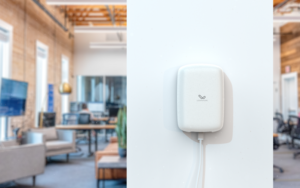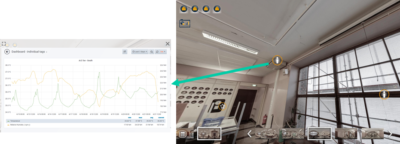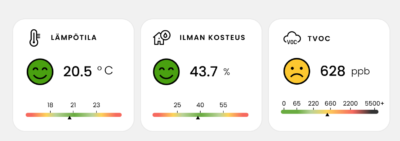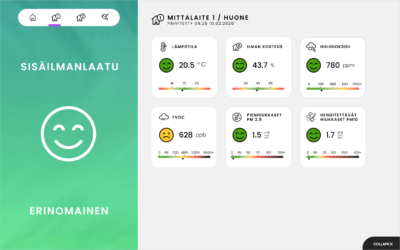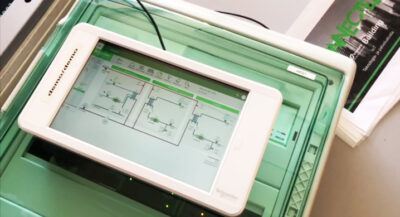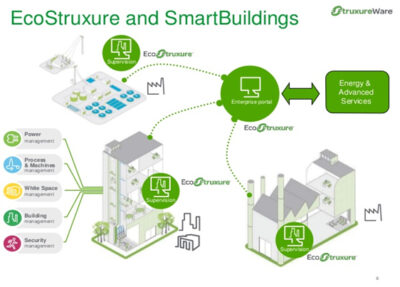The integration of technical building systems, data management and the automatization of data use are means to increase the value of a property. The integration enables the use of two-way energy systems, improves energy efficiency and indoor air quality, as well as offers a clear interface for services provided by third parties.
Smart housing properties have various technical building systems, such as heating, water, ventilation, cooling, fire protection, electricity and building automation systems. There is a great deal of untapped computing power in these systems. An integration plan would connect the technical building systems of a property to each other, forming one entity. This way, the data produced and used by the property would flow, in a controlled way, through a building automation system, enabling the existence of energy communities, as well as an artificial intelligence block on the property level.
This is a continuum and implementation of the EU’s Smart Readiness Indicator (SRI) work, which develops indicators for the intelligence of and value creation for a property. In the future, the Ministry of the Environment requires that buildings are connected to two-way energy networks and that one is familiar with the Energy Performance of Buildings Directive (EPBD 2018). One solution is to require the drawing up of an integration plan in the site allocation conditions and in connection with the renovation of municipally owned properties.
Partners
Integrio
Loopshore
AX-Solution
VTS Kodit Sr
Ekokumppanit
Challenges
Without any integration plan, information security, maintenance and life cycle costs pose a risk for technical building systems. The data in the technical building systems must be able to resist information security attacks. In maintenance, the changing ownership base of actors sets a challenge, when businesses that deliver systems are merged, sold or even terminate their operations. Price challenges are caused by overlapping functions between different systems and the adding of new services without a clear overall picture.
If there is no clear place for an artificial intelligence block within a property, some of the computing power will remain untapped. Energy saving solutions and two-way energy networks require a clear connection to a property’s system, when data must be secure and reliable in both directions.
The integration plan pilot processed data that was received from a property, connecting three separate pilots. These were an algorithm-based demand response of heat and a virtual power plant, optimisation of air quality, as well as the pilots dealing with an active rescue plan.
Objectives
The objective was to create a reproducible and scalable concept for the management of property data, as well as the instructions for the site allocation and renovation conditions.
A building automation system, together with other technical building systems, forms a property management system. This way, the conditions can be optimised automatically and energy efficiently, taking into account the season, occupancy rate, the air quality and ventilation in flats, as well as temperature forecasts.
In the building automation, a property’s artificial intelligence block carries out a demand response of heat and forms a virtual power plant. At the same time, it is also studied how services provided by third parties can safely and securely be integrated into the system. The building automation system will also include inexpensive air quality and situation awareness sensors that utilise edge computing, as well as instructions and alarm data produced by the sensors. The instructions and alarm data can also be utilised in an active rescue plan.
Results
The property maintenance, energy efficiency and indoor air quality, as well as new services, will bring added value both to residents and property owners, when operating costs decrease and living is more comfortable thanks to a raised level of automation. The value of a property is affected positively by its intelligence and energy systems. Consequently, in connection with site allocation, one should require the drawing up of a property-level integration plan, i.e. an entity formed by the technical building systems.
This deals with the communication of thumbnail-sized processors within a property. Each technical building system has its own processor that is connected to the building automation. The data communications from the building and to the building takes place via the building automation. Data can be processed, and it is possible to make artificial intelligence blocks for an on-demand power plant, a virtual power plant, as well as for safety, security and energy saving, together with residents. When data is clear in an individual property, it will facilitate block-level communication, creating smart villages.

